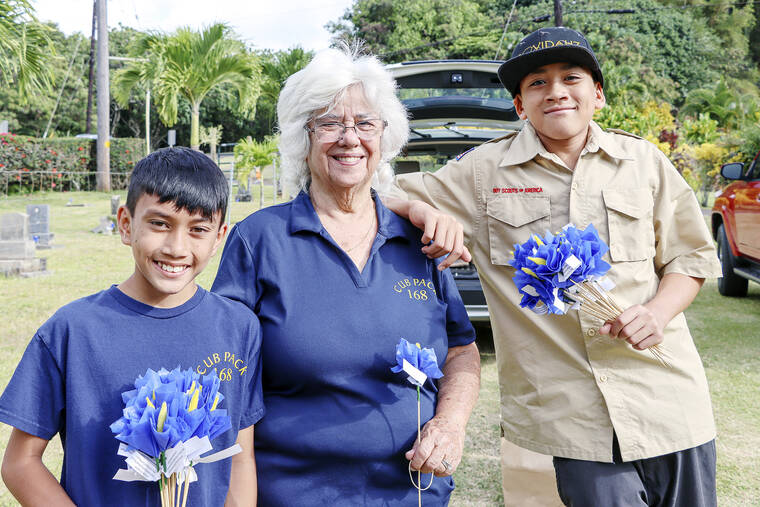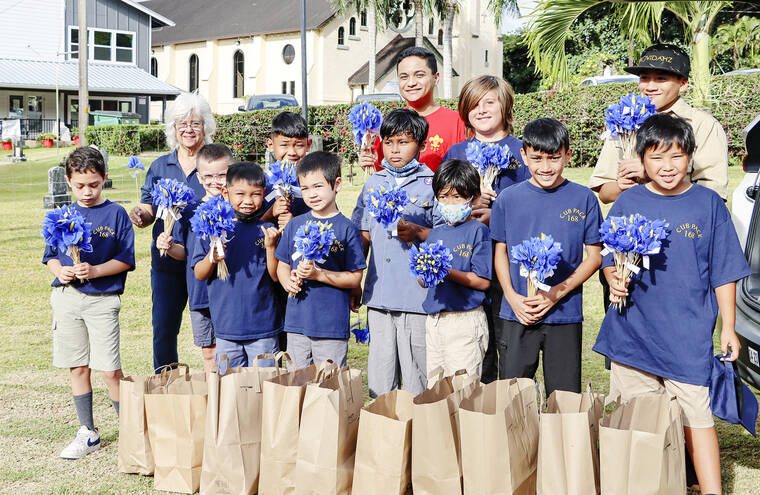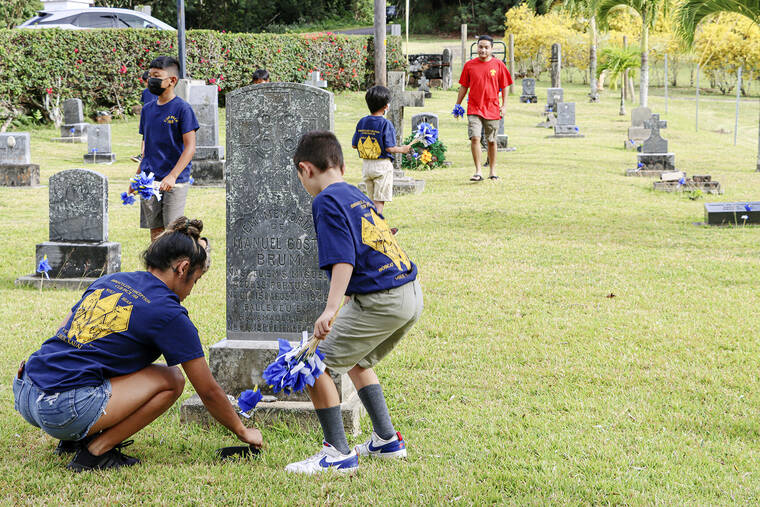LIHU‘E — Not all veterans are at rest at the Kaua‘i Veterans Cemetery in Hanapepe.
Those words echo today as it did a long time ago, when Cubmaster of Pack 168 Kathleen Langstad collected her little Cub Scouts and parents, and with the help of Scouts from Troop 168 sponsored by the Immaculate Conception Church planted 4,000 hand-made floral decorations, Saturday at graves in cemeteries in the Lihu‘e area.
“We have no way to keep track,” said Langstad who had the help of her grandson and great grandson. “We just put flowers on every grave. We might run short, but we can do what we can.”
Mary Lardizabal, the Scoutmaster for Troop 168, said the group included a dozen scouts, many accompanied by their parents and siblings start with the 75 graves at the Immaculate Conception Church tucked in a pocket of Kapaia Valley.
From there, they move to the Immaculate Conception Cemetery on Ma‘alo Road, continue up Ma‘alo Road to the Kaua‘i Memorial Garden, and more, ending at the Lihu‘e Cemetery that overlooks the ruins of the old Lihu‘e Plantation mill.
The tradition started decades ago when Scout troops engaged in an unspoken traditional service project of remembering and honoring Veteran fallen heroes, other troops collecting at the Kaua‘i Veterans Cemetery for clean up, including washing gravestones by hand, planting American flags on the individual graves and along the avenue leading to the pavilion for the annual remembrance service for all branches of the armed forces.
This year, Russell Goo, one of the leaders of Pack 334 and Troop 334, including girl Scouts, sponsored by the Holy Cross Church in Kalaheo, was tasked with tidying the newly-expanded Kaua‘i Veterans Cemetery for the Memorial Day services.
“I have an Eagle Scout candidate doing his Eagle project at the Kaua‘i Veterans Center, soon,” said Lardizabal, whose son’s Eagle project saw the birth of the patriotic mural honoring all branches of the military at the entrance to the KVC. “They’re working on the Veterans Museum so we’re planning on doing some trophy cases for the museum.”
Langstad, who was introduced to the Cub Scouts by Destry Langstad, said the annual project starts in January, when scouts and their parents — during the time of COVID when in-person meetings were shut down — picked up supplies for the flowers to assemble at home. Once that batch was done, they would return with the flowers and pick up supplies for more.
“When we started, we were doing lei,” Langstad said. “But when Hurricane Iwa came in 1982, a lot of the trees were damaged or destroyed and we couldn’t get plumeria, anymore. That’s when we discovered the hand-made paper flowers. At first, it was the red poppy. That evolved to the blue flowers with the yellow stamens representing the blue and gold of the Cub Scouts.”
•••
Dennis Fujimoto, staff writer and photographer, can be reached at 245-0453 or dfujimoto@thegardenisland.com.




